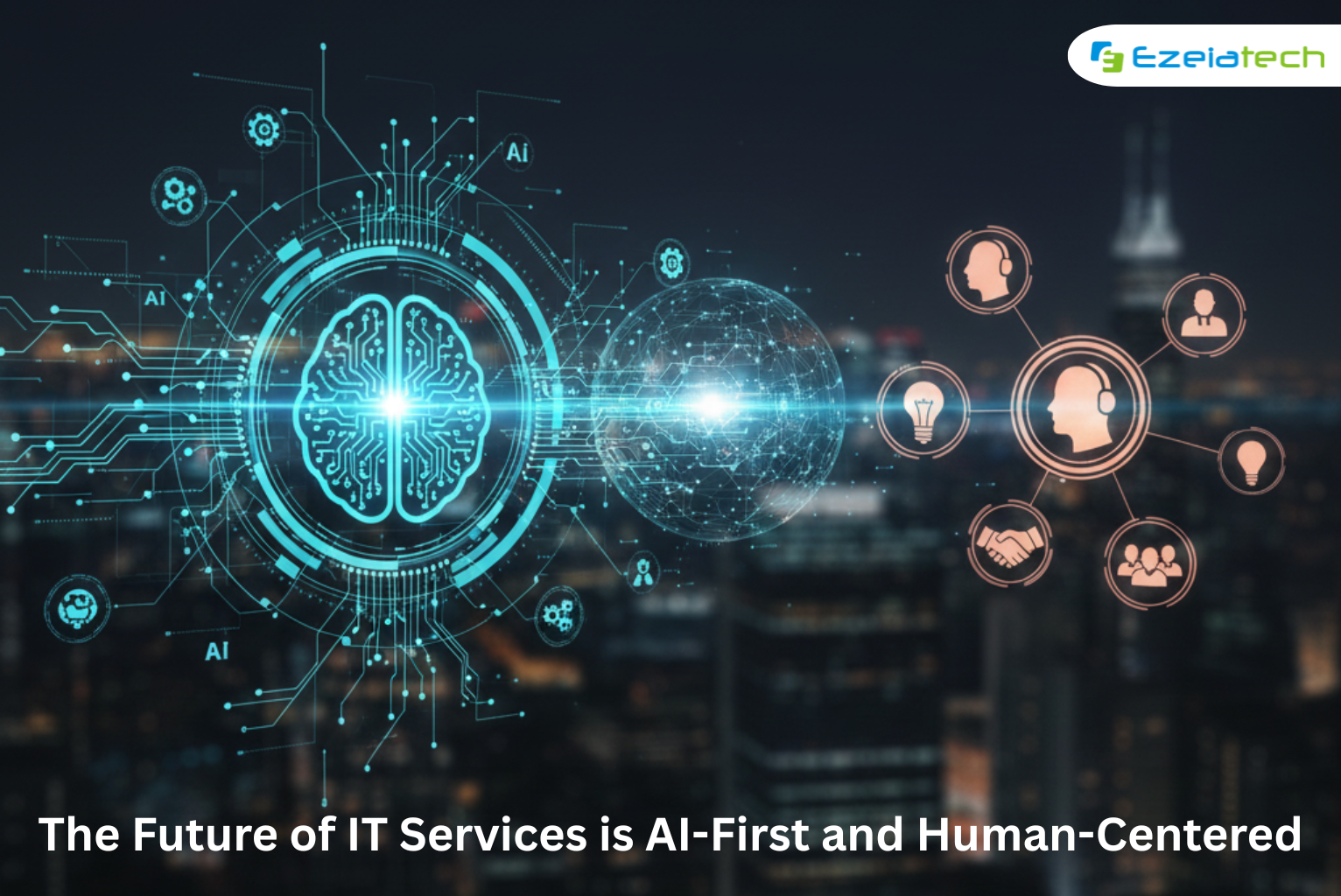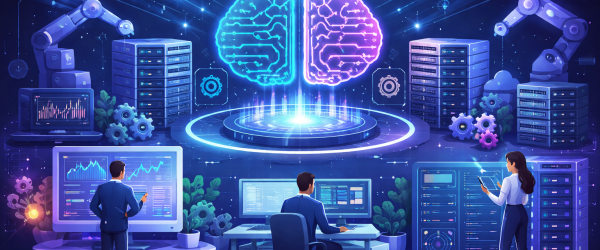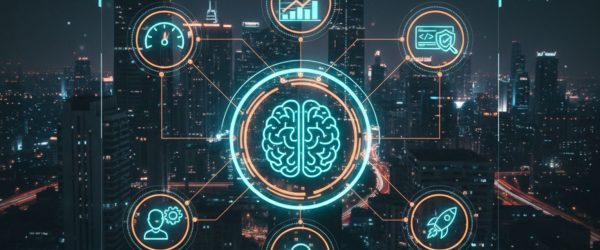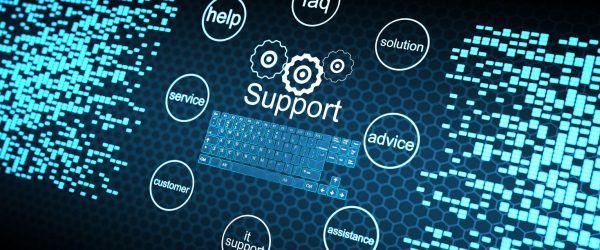Introduction
In today’s hyper-digital world, IT services are no longer just a back-end support function — they are the engine powering business transformation. According to Gartner, global IT spending is expected to reach $5.1 trillion in 2025, with AI adoption growing by 38% year-over-year as organizations accelerate their move toward AI-driven operations. But here’s the real question: What does the future of IT services look like when everything is powered by AI — yet designed for humans?
The answer lies in an AI-First and Human-Centered approach — blending automation, intelligence, and human insight to deliver seamless, personalized, and future-ready IT services.
Why AI-First Matters in IT Services
AI is no longer a “nice-to-have” — it’s a business necessity. Here’s why leading organizations are embedding AI into IT services:
| AI Capability | Business Impact |
| Predictive Analytics | Anticipates system failures, reduces downtime by up to 40% |
| Intelligent Automation | Cuts manual IT tasks by 60-70%, freeing teams for innovation |
| Natural Language Processing (NLP) | Enhances IT helpdesk experience with AI chatbots and virtual agents |
| Decision Intelligence | Improves IT cost optimization and SLA compliance |
Human-Centered Design: The Missing Piece
While AI brings speed and scalability, human-centered IT services ensure that technology serves people — not the other way around.
Human-centered IT focuses on:
- Personalized Experiences: AI-driven insights tailor IT support and services to individual users.
- Employee Enablement: Real-time AI coaching and knowledge bases help employees solve problems faster.
- Trust and Transparency: Explainable AI builds user confidence in automation-driven decisions.
According to a PwC report, 73% of customers say experience is a key factor in their purchasing decisions — and the same applies internally for employee experience. IT services designed with empathy and usability in mind create happier, more productive teams.
AI-First + Human-Centered: A Winning Combination
Future IT service models will integrate AI for efficiency and human-centric design for adoption and trust.
| Focus Area | AI’s Role | Human-Centered Benefit |
| Service Desk | AI chatbots, sentiment analysis | Faster resolutions, empathetic interactions |
| Infrastructure Management | Predictive maintenance, auto-remediation | Less downtime, improved business continuity |
| Security & Compliance | Threat detection, anomaly alerts | Stronger data protection without user friction |
| Knowledge Management | AI-curated knowledge bases | Easier access to relevant information |
Real-World Examples of AI-First, Human-Centered IT
- Proactive IT Support: AI predicts potential network outages and alerts IT teams in advance — preventing disruptions.
- AI-Augmented Service Desk: Virtual assistants resolve routine tickets instantly while escalating complex issues to human agents with context, improving first-call resolution.
Employee Experience Portals: Personalized dashboards suggest training, tools, and support tailored to each employee’s needs.
Challenges & Considerations
- Data Quality: AI models are only as good as the data they train on.
- Change Management: Employees need training and trust-building to adopt AI-driven tools.
Ethics & Governance: Bias mitigation, explainability, and compliance must be built in from day one.
The Future Outlook
The AIOps market is projected to reach $60 billion by 2030, proving that AI will dominate IT service operations. However, the organizations that will lead the future are those that combine AI’s intelligence with human-centric design.
This approach will create IT environments that are:
- Self-Healing: Systems that detect, fix, and prevent issues automatically
- Adaptive: Scaling resources dynamically based on real-time demand
- Empathetic: Delivering services that consider human experience and feedback
Conclusion
The future of IT services isn’t just AI-first — it’s AI-first and human-centered. Organizations that master this balance will achieve higher efficiency, reduced downtime, and superior user experiences.
If your enterprise is still relying on reactive IT support, now is the time to reimagine your IT strategy with AI and human-centric design at its core. The next generation of IT services will not just power business — they will empower people.







